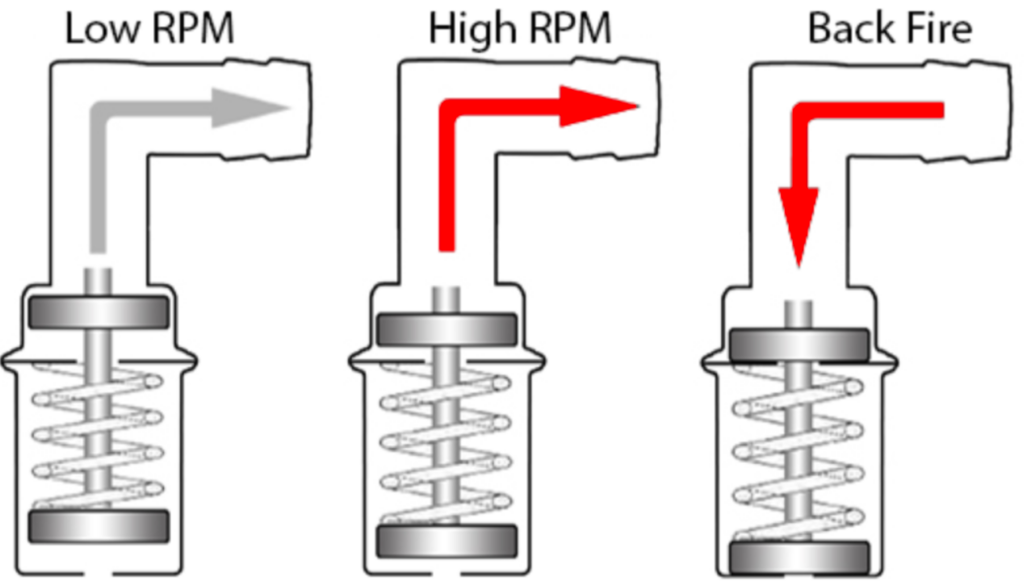Car Shakes When Idle But Smooths Out While Driving: (11 Potential Causes)
If your car is shaking at idle but smooths out while driving, it can be causes by worn-out spark plugs, bad battery, bad motor or transmission mounts, stuck PCV valve, clogged fuel injectors, bad MAF sensor, dirty throttle body, bad idle air control valve, clogged fuel filter and clogged engine air filter.
Feeling annoyed when your car shakes and vibrates at stoplights? You just want a smooth idle. But when driving the engine seems okay. So it’s hard to know the problem. In this guide, we’ll look at common causes and fixes to stop the annoying car shake at idle. Then you can have peace of mind.
You can also read my guide on car sputters after refilling the gas to learn more.
For you guys, I have created this interactive car diagnostic tool that can help you diagnose car problems in very simple steps.
- Car shaking at idle can be caused by worn spark plugs, bad motor mounts, dirty throttle body, clogged fuel injectors, failing sensors, and vacuum leaks.
- First step is to scan for error codes if check engine light is on. Pending codes can show intermittent issues.
- Visually inspect engine components like motor mounts, air filter, throttle body. Use brake cleaner to detect vacuum leaks.
- Test parts like spark plugs, fuel injectors, sensors to confirm issues. Replace as needed.
- Clean dirty components like throttle body, MAF sensor, engine air filter.
Do I Have Any Personal Experience With Car Shaking Issue At Idle But Fine When Driving?
My cousin’s 2001 Honda Civic would shake terribly when idling at stop lights. I helped him diagnose it by checking the motor mounts, which had worn out rubber causing excessive engine movement. Replacing the mounts solved the shaking issue and made the Civic run smooth again
Must Scan Error Codes When Your Car Starts Shaking At Idle
The first step to do when your car starts shaking at idle but smooths out when driving is to see whether the check engine light illuminates on the dashboard.
It’s a diagnostic tool that can alert you to any problems or faults in your engine or other components.
If the check engine light is illuminated, it’s an indication that something is wrong, and needs to be checked out.
If car is shaking at idle and check engine light is on, use an OBD-II scanner to read the codes and identify the issue.
However, in some cases, you can’t see confirmed trouble codes. Such codes appear for some time due to intermittent faults in the engine and then disappear from the engine’s memory.
Bluedriver OBD2 scanner has a section of pending trouble codes that can detect these trouble codes. For this, you can read my guide on check engine light with no codes.
Bonus Read: Car vibrates in drive but not in neutral
What are The Causes Of Car Shaking At Idle But Running Fine When Driving?
1. Bad Motor And Transmission Mounts
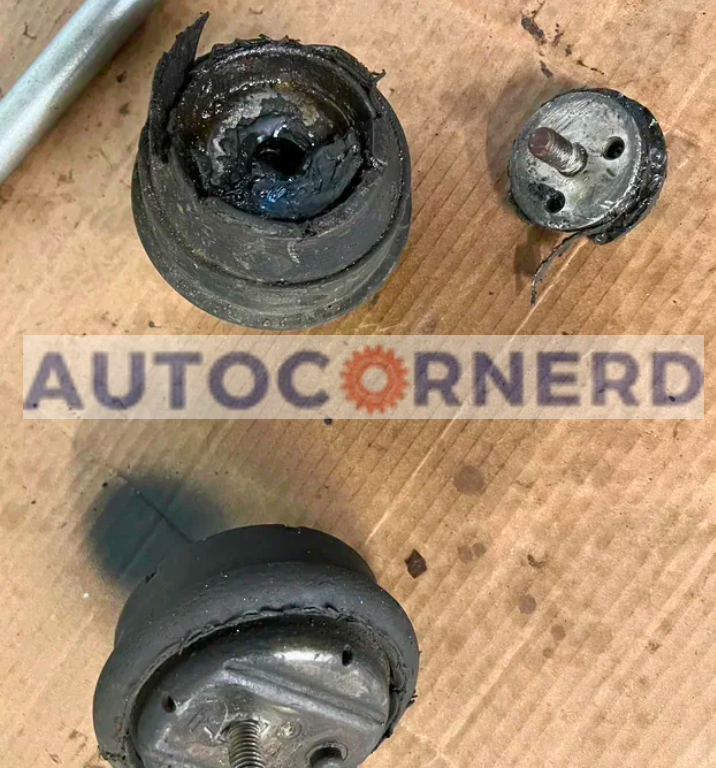
The engine and transmission in your car are attached to the frame with metal and rubber brackets called motor mounts. These mounts keep the engine and transmission from shaking around too much.
When the motor mounts get old and worn out, they don’t hold the engine and transmission as tight. Then the engine and transmission can shake and make more noise when your car is idling. But when you start driving, the shaking and noise get less because of the car’s motion.
New motor mounts will stop the extra shaking and noise by holding the engine and transmission tight again. Replacing worn out mounts is important to make your car run smooth and quiet. The parts aren’t too expensive either.
How to spot?
Your owner’s manual outlines where to locate the motor and transmission mounts under the hood. Properly functioning mounts are essential for smooth engine operation and preventing damage over time.
When inspecting mounts, watch for:
- Loose Bolts: Shake each mount to check if bolts wiggle loose. Replace loose mounts immediately.
- Cracked Rubber: Examine the rubber pieces on each mount. Tiny surface cracks are normal with age, but deep cracks or tears require new mounts.
- Damaged Brackets: Check where mounts attach to the vehicle frame for bending, rust, or other wear. This often means the mounts themselves need replacing.
How to test?
With the parking brake engaged, apply moderate gas pedal pressure while watching the engine. It should rock slightly but not violently shake or jump. If it does, a mount is likely damaged.
You can further test by shifting between drive and reverse gear while throttling. Listen for clunks or feel for hard vibrations indicating a bad front or rear mount. Replicate the test in both gears to isolate the faulty mount.
2. Fouled Spark Plugs
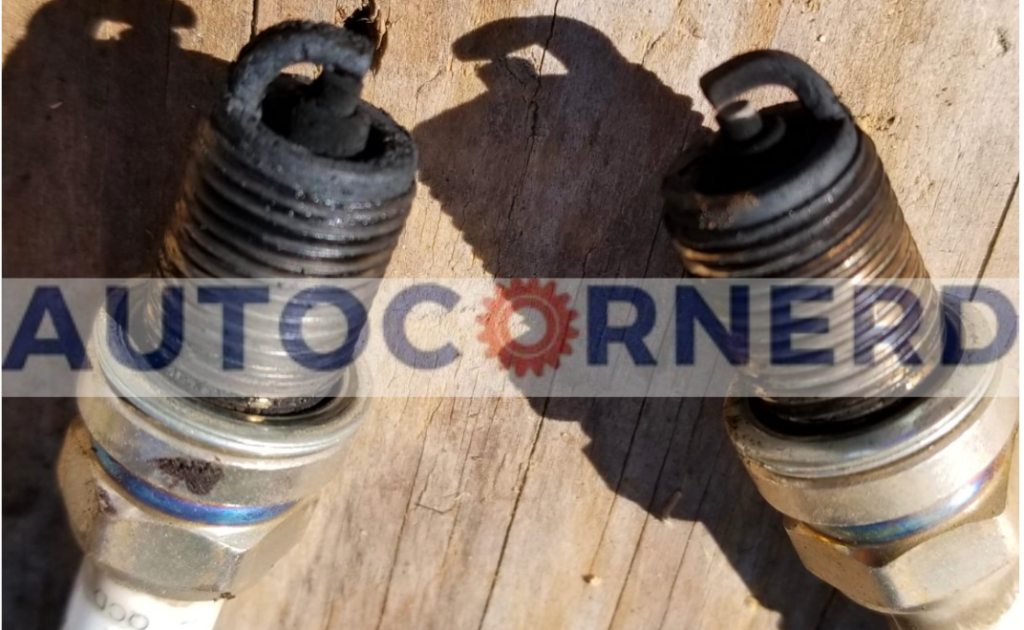
Spark plugs do their job when the car’s ignition system sends voltage to them. The voltage travels down the center electrode of the spark plug. It jumps across the gap to the outer electrode.
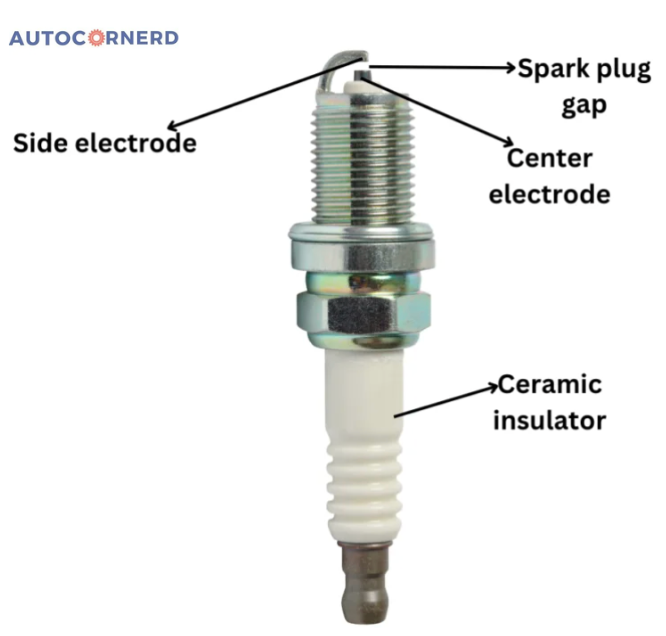
This makes a spark that lights the fuel and air mix in the cylinder. As the mix ignites, the piston gets pushed down. This makes the crankshaft turn. That creates the power.
When spark plugs get old, they can’t make a strong enough spark. This spark can’t ignite the fuel mix well. So the engine misfires. This can make the car shake when it’s idling.
When the car starts moving, the engine can make enough power. This ignites the air-fuel blend smoothly. So the ride gets smooth.
How to spot?
Remove spark plugs from the engine with a socket wrench or a spark plug socket.
Once the spark plugs are removed, you’ll want to check them for signs of wear, such as corrosion, carbon buildup, cracks in the porcelain, or an improper gap between the electrodes.
You can read this PDF to learn about signs about bad spark plugs.
Visual inspection of the spark plugs can indicate bad plugs. Look for wet oily deposits, excessive carbon build up, electrode wear, or light grey ash deposits.
How to test?
You can test spark plugs by using a multimeter and setting it to resistance measurement. You should get a reading between 4,000 to 8,000 ohms on the center electrode.
In addition, you should look for a short between the ground and center electrode of the spark plug. No short means a good spark plug.
You can watch following youtube video to learn more:
How to fix?
You can try cleaning the spark plugs using the wire brush and spark plug cleaner to carefully remove any carbon deposits or contaminants from the electrode. Ensure not to damage the electrode or insulator in the process.
First, use compressed air to clean off any dirt and debris. Then, keep the spark plug soaked in the brake cleaner till all the gunk on the spark plug is washed away.
3. Malfunctioning Idle Air Control Valve
The idle air control valve is an important part of your engine. This little valve helps control the idle speed of your engine.
The idle air control valve works with the engine computer. Together they make sure the engine gets just the right amount of air when idling. This helps the engine run nice and smooth.
The idle air control valve is usually found on the side of the throttle body. It’s job is to let in more air or less air depending on what the engine needs.
When everything is working right, the idle air control valve helps the engine idle perfectly. But sometimes this valve can get stuck or stop working. Then the engine starts shaking or vibrating when idling.
You can watch below Youtube video to learn the working of the Idle Air Control Valve:
If the IACV is malfunctioning, it will no longer be able to provide the correct amount of air to the engine, resulting in the engine running rough. This is what causes the car to shake when you stop.
How to spot and test?
The idle air control valve can be susceptible to carbon buildup.
To test a faulty IACV, begin by idling the engine. Place your finger over the hole in front of the throttle plate, blocking it. The idle should drop.
As soon as you remove your finger, the idle should jump up before returning to its usual rate. This sudden change in RPM from low to high and back to its initial state is the PCM detecting the blocked bypass air port, retracting the IACV, and then allowing air into the bypass port.
This air causes the RPMs to rise and the PCM detecting the high RPMs extends the IACV to return the idle to its normal rate.
Another way to test IACV is by measuring voltage and resistance across the terminals of its connector using the multimeter. You can watch the below YouTube video for a better understanding.
4. Stuck PCV Valve
A PCV (Positive Crankcase Ventilation) valve is a small, one-way valve located inside the crankcase of most engines.
It is designed to allow the crankcase gases to be recirculated back into the combustion chamber, instead of venting them into the atmosphere.
The gases are recirculated in order to reduce pollutants created by the exhaust. The PCV valve is usually found on the intake manifold, near the crankcase.
The PCV valve:
- Closes slightly to reduce airflow at low RPM (idle), when the vacuum is high.
- Opens more to increase airflow at high RPM, when the vacuum is low.
If the PCV valve becomes stuck in the open position, it will allow an excessive amount of air to enter the intake manifold. This will cause the air/fuel mixture to become too lean, which will result in a rough idle.
How to spot?
PCV valve can become stuck open or close due to oil deposits. To test if the PCV valve is stuck, you can remove the oil filler cap and place the paper on its opening. If the paper is not being held against the opening, it means there is no vacuum and PCV valve is malfunctioning.
You can also remove the PCV valve and shake it. If you hear any rattling sound, it means the PCV valve is in good condition.
In addition, you can blow through the port of the PCV valve which is connected to the air intake hose. If the PCV valve is good, you will not be able to blow air through the valve as the PCV valve only allows air to suck through.
Lastly, you can use OBD2 scan tool to look for any trouble codes related to a bad PCV valve.
5. Clogged Fuel Injectors
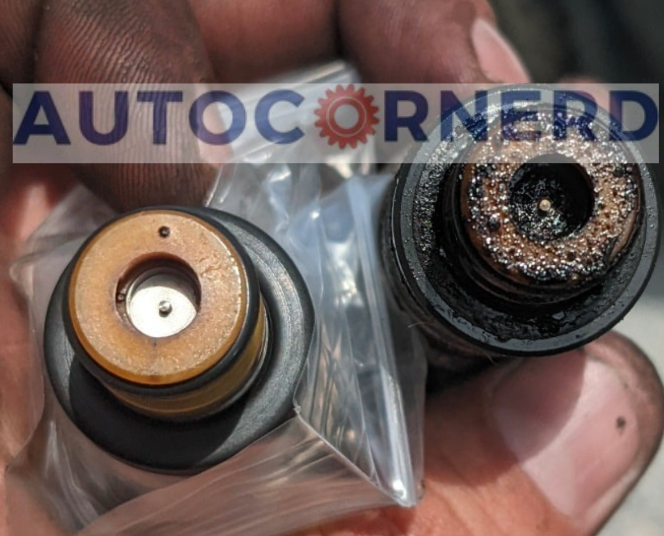
A fuel injector is a small electronic part that goes into the fuel rail. It puts fuel directly into the engine. The engine computer tells it when and how much fuel to put in. This makes sure the right amount of fuel gets to the engine.
The fuel injector has three main pieces – a pin, a coil, and a spring. The spring keeps the pin closed. When the coil gets electricity, it opens the pin so fuel can go through.
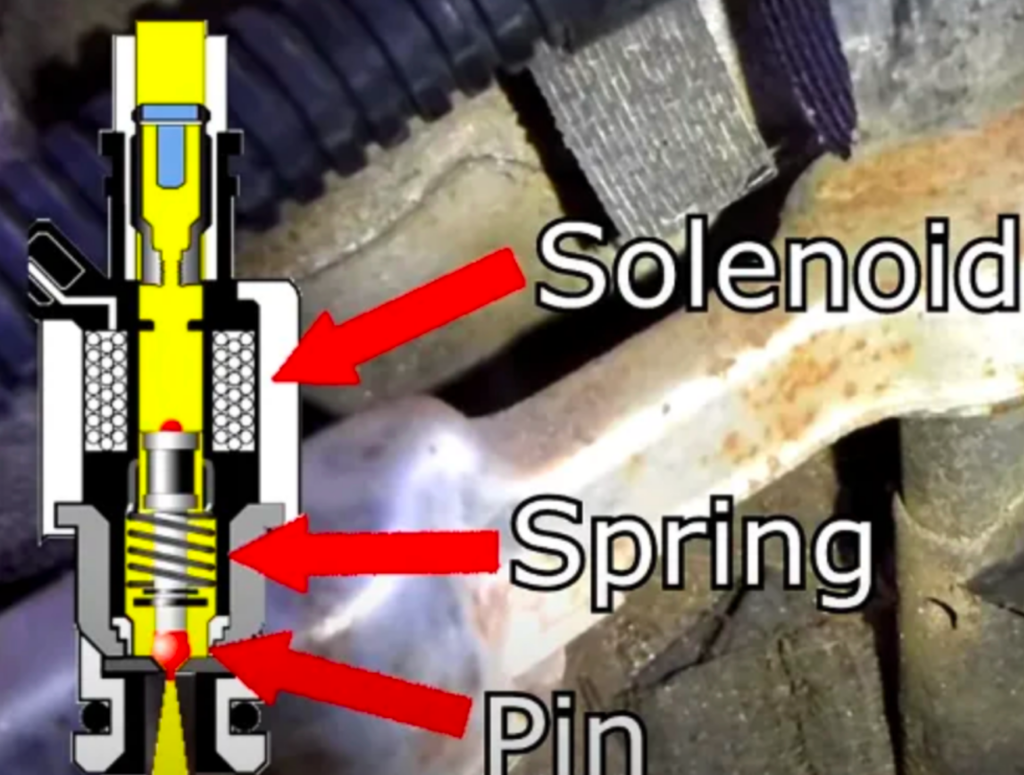
If gunk builds up, the injector can’t put in the right fuel amount. This makes the engine run rough, rev on its own, or stall.
How to find a bad one?
One way is to listen for clicking sounds. First, remove the fuel rail but leave the fuel hose on. Turn the key to get fuel pressure. Then put a 9 or 12 volt battery to each injector. Use a long screwdriver to listen for clicks. No click means that one is bad.
That ticking noise is basically the opening and closing of a pin in the fuel injector. Also, see if the fuel injector is injecting fuel in a certain direction without leaking or not. If it’s leaking, you would need a new fuel injector.
You can check out the following video from 2:40 to get an idea of how to test fuel injectors.
Apart from that experiment, check these things on the fuel injector:
- Look for burrs on the injector inlet
- Check nozzle holes for hole erosion or plugging
- Inspect the end of the nozzle for burrs or rough machine marks
- Look for cracks at the nozzle end
6. Malfunctioning MAF Sensor
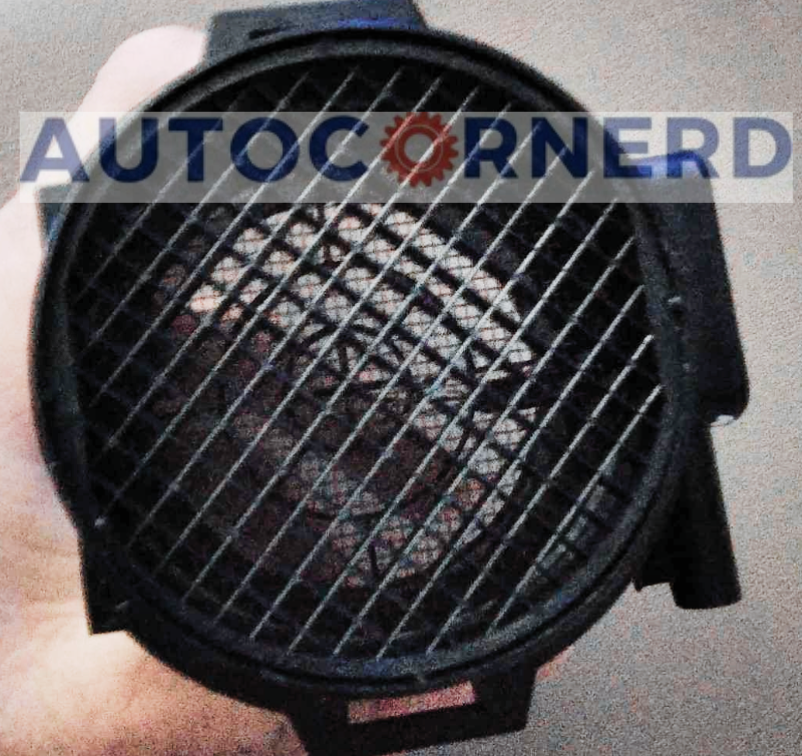
The mass airflow (MAF) sensor is an important part of the car’s electronic engine control system. It measures the amount of air going into the engine.
Then the engine control system uses that measurement to calculate how much fuel to inject. Getting the right air-fuel mixture is necessary for the engine to run properly.
The MAF sensor sits in the intake system between the air filter and intake manifold. It’s made up of a plastic housing with the sensor inside.
When the MAF sensor fails, it sends wrong information to the engine control system. That leads to the wrong air-fuel mixture. Too much fuel makes the engine run rich. That reduces power and torque. The lack of power makes the engine shake.
How to notice a bad MAF sensor?
A few things can make the MAF sensor go bad. The most common is dirt, debris, or oil building up.
That buildup keeps the sensor from accurately detecting incoming air. So the air-fuel ratio gets thrown off.
A clogged air filter can cause it. Or dirt and dust getting in through a vacuum leak in the intake.
How to test?
If you want to test your MAF sensor, you can check the voltage it produces. When you press the gas pedal, more air flows through the sensor, which makes the voltage go up. When the car is not moving much, the voltage should be less than 1.0V. But when you speed up, the voltage from the MAF sensor goes up to around 1.7V.
How to fix?
You can try cleaning the MAF sensor first. Follow these steps:
- Disconnect the negative terminal of the battery.
- Remove the MAF sensor, it is located on the intake tube between the air filter box and the throttle body facing upwards.
- Spray all of the little sensors you see inside of the MAF carefully with this MAF sensor cleaner. Avoid touching the wires of the MAF sensor. It will damage it.
- Reinstall and reconnect the battery terminal.
- Start the engine and let the ECU relearn idle for 15 minutes.
Note: Not all vehicles have MAF sensors. Instead, some vehicles have MAP (Manifold Air Pressure) sensor. The MAP sensor cannot be cleaned. It should be replaced.
7. Clogged Engine Air Filter
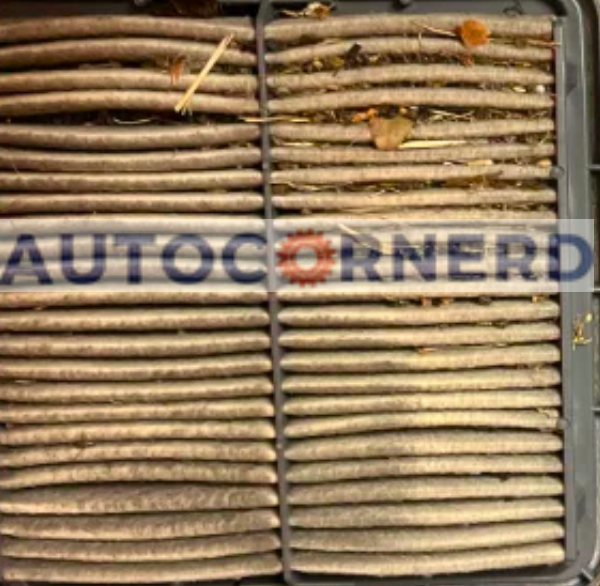
An engine air filter is part of your car’s air intake system. This filter stops dirt and stuff like dust and pollen from going into the engine when air is pulled in.
This helps keep the engine clean so it runs smooth. The engine air filter is before the MAF sensor.
A dirty or clogged engine air filter can make your car shake when stopped. But it is smooth when driving. This happens because a dirty filter blocks the airflow to the engine.
When airflow is blocked, the engine has to work harder to pull in air. This makes the engine run rough and shake the car.
Note the shaking may not be felt while driving. This is because the engine gets more air and works better.
But when stopped, the engine does not get enough air. So it cannot work right. This makes the engine vibrate and shake the car when stopped.
How to spot a bad filter?
Open the hood and find the engine air filter. A clogged filter will smell dusty. It will also look dull and stained from dust and smoke. A clean filter is pinkish or white.
The best way to avoid a bad filter is check and replace it regularly. Most cars need a new engine air filter every 15,000 to 30,000 miles. This depends on the vehicle and driving.
8. Bad Engine Battery
If you’re experiencing your car shaking at idle but running smoothly when driving, it could be related to an issue with the battery.
For more information on these potential causes, be sure to check out our other post “My car starts sometimes and sometimes it doesn’t” for more information on possible causes and solutions for this problem.
The battery is an essential part of the electrical system in a car. It supplies the power to start the engine, and it can also provide additional power to the electrical components (spark plugs, ignition coils while the engine is running.
If the battery is weak or dying, it may not be able to supply the necessary power, resulting in a number of problems.
How to spot?
A healthy battery has a voltage of:
- 12.6V when fully charged and the engine is not running
- 13.5 to 14.5V when the engine is running
- 9.6 to 10V when the engine just cranks before starting (it only drops to 9.6V for a couple of seconds when the engine cranks). As the engine starts running, the alternator supplies the current to the battery.
So, you should use a multimeter and check voltage across battery terminals of your car.
9. Dirty Throttle Body
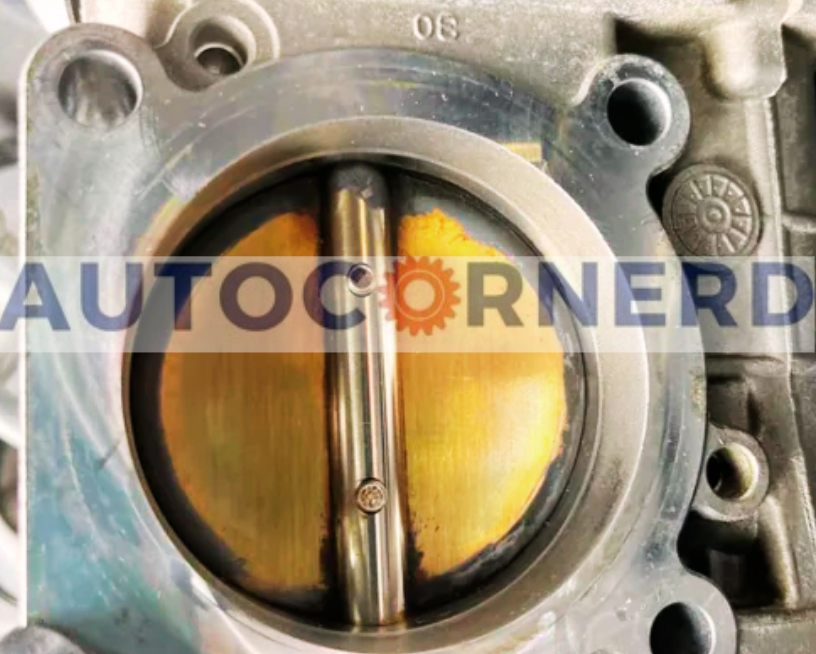
A car’s throttle body is an essential component of its engine management system. It regulates the inflow of the air that gets drawn into the engine as the driver accelerates.
If a throttle body is dirty, it can cause a car to shake when stopped but run smoothly when driving.
The throttle body is connected to the gas pedal, so when the driver presses the gas pedal, it opens the throttle body, allowing more air to flow through. This increases the engine’s power and efficiency.
The mechanical throttle body is driven by a throttle cable that links the accelerator pedal to the throttle plate.
If the throttle cable is too tight or sticking a little, it will not be able to have full control over the throttle plate. As a result, your car engine’s RPM will boggle without pushing a gas pedal.
The electronic throttle body is controlled by the ECU. The accelerator pedal sensor sends signals to the ECU so that it can compute how much the throttle valve should be opened.
How to spot?
A dirty throttle body can be caused by a build-up of dirt and debris in the air intake system. This build-up can be caused by a number of things, such as a dirty air filter or a leaky air intake hose.
Moreover, if the diaphragm of the fuel pressure regulator ruptures, excessive fuel fumes will leak through the vacuum hose and build carbon deposits on the throttle body.
The dirt and grime can then get mixed with the lubricating oil and form a sticky substance that affects the throttle body’s operation.
Now when there are sticky dirt and carbon deposits in the throttle body, they will prevent the butterfly valve of the throttle body to move freely, which will disturb airflow to the engine.
How to fix?
You should use this throttle body cleaner to clean the throttle body. Make sure that the throttle plate of a throttle body is not binding when you try to move it with your finger.
Note: You have to perform the ECU relearn procedure for an electronic throttle body after cleaning. I have explained the procedure of throttle body relearn in my guide on the P1516 code.
10. Vacuum Leaks
A car’s engine takes in air to mix with fuel for combustion. The air comes in through hoses attached to the air intake. These hoses connect to parts like the PCV valve, fuel regulator, and charcoal canister.
When the hoses leak, extra air enters the engine. The car’s computer does not measure this extra air. So the engine gets more air than the computer expects. This makes the fuel-air mixture wrong.
The problem is worse when idling. At idle, the engine creates a vacuum. This vacuum sucks in extra air from leaks. So the car shudders at idle with vacuum leaks.
When driving, the vacuum is less. So less extra air enters through leaks. The engine runs smoother when driving.
Signs of vacuum leaks
- Cracked or worn hoses: Vacuum in hoses can make them crack.
- Leaking intake manifold gasket: This gasket seals the intake to make vacuum. Leaks prevent that.
- Defective intake valves: If valves like EVAP purge valve of PCV valve become bad, they can’t make vacuum well. This happens if they are stuck open.
You can use a carb cleaner to detect vacuum leaks in the engine. You can watch the below Youtube video for a better understanding.
11. Dirty Engine Oil
The oil helps the engine’s moving parts like pistons, cylinders, and valves run smoothly. Over time, the oil gets dirty from debris and sludge buildup.
Sludge is a thick, gooey gunk in the oil from wear and tear. It has contaminants that stop the oil flowing well. This means the oil doesn’t circulate right. That causes friction felt as vibration.
At idle, the engine runs low RPMs. So the oil doesn’t circulate fast.
Any sludge doesn’t circulate well either. This makes uneven oil flow and lowers engine efficiency. It can make the car shake when not moving.
Check the oil quality on the dipstick. Change the oil every 5000 km for smooth running.
Use the recommended oil viscosity too. Read my 5w20 vs 5w30 oil guide to learn more.
How Do I Fix My Car Shaking When Stopped?
You can start by checking for any loose or damaged engine mounts. Engine mounts hold the engine to the car’s frame. Worn mounts can let extra vibration from the engine when idling. Look at each mount carefully for cracks or loose bolts. Tighten or replace any damaged mounts.
Next, check the spark plugs. Old or dirty spark plugs can cause bad fuel burning and uneven power pulses that make the engine shake.
Replacing worn spark plugs is an easy fix that could smooth out engine work. While the plugs are out, check for oil dirt or odd electrode wear that could show issues with oil seals or rings.
Another problem could be dirty fuel injectors. Over time, injector nozzles can get carbon buildup that affects fuel spray at idle speeds.
Try using a good fuel injector cleaner – let it go through the fuel system as directed. Cleaning the injectors may help remove deposits affecting idle smoothness.
Issues in the ignition timing could also cause shakes and vibration just at idle once engines heat up.
Is it Safe to Drive a Car That Is Shaking When Idle?
A car that shakes while it is idling can be unsafe and risky to drive. The shaking likely means the engine has a problem. These problems make the engine run rough. Keep driving with these problems can damage parts more or make the engine stop running.
Before driving a shaky car, it is smart to have a mechanic find and fix the problem. Replacing broken parts and tuning the engine can make it run right again. This prevents future problems.
Sometimes the fix is easy – new sparks or cleaning the fuel system. Other times, work inside the engine or computer changes are needed.
Either way, it pays to spend a little time and money to fix the shaking in your car when it is idling.
Final Thoughts
Cars that shake when idle but smooth when driving can be a tricky problem to diagnose. It can be caused by a variety of issues, ranging from a worn-out engine mount to a misfiring cylinder. It is important to get the car checked out and fixed as soon as possible to avoid more serious problems.
Some First Hand Experiences Shared By Users In Different Communities
Our team conducted research across various online communities, forums, and subreddits to gather user comments and opinions on “car shaking at idle but smoothing out while driving”.
User 1 says:
Driving a 2012 Audi A4. Faced a similar issue; it would shake at idle. A friend suggested it could be the fuel injectors. Took it to a mechanic, and sure enough, they were clogged. A good cleaning and the problem was gone.
User 2 says:
I use a 2003 Honda Civic. Noticed it shaking when idling but smooth while driving. Thought it was something serious, but it turned out to be a simple air filter issue. Replaced it and the idle smoothed out.
User 3 says:
Own a 2004 BMW 330i. It started shaking at idle. I’m pretty hands-on, so checked the engine belts. They were worn out and causing the issue. Replaced them and the idle became as smooth as ever.
User 4 says:
Own a 2010 Ford Ranger. Experienced shakes at idle, but not while driving. Thought it was the transmission at first, but a local mechanic found it was a misfiring cylinder. Changed the ignition coil and the problem was solved.

